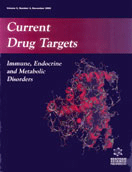Abstract
Recent availability of expanded treatment options for both type 1 and type 2 diabetes has not translated into easier and significantly better glycemic and metabolic management. Patients with type 1 diabetes continue to experience increased risk of hypoglycemic episodes and progressive weight gain resulting from intensive insulin treatment, despite the recent availability of a variety of insulin analog. Given the progressive nature of the disease, most patients with type 2 diabetes inevitably proceed from oral agent monotherapy to combination therapy and, ultimately, require exogenous insulin replacement. Insulin therapy in type 2 diabetes is also accompanied by untoward weight gain. Both type 1 and type 2 diabetes continue to be characterized by marked postprandial hyperglycemia. Two hormones still in development are candidates for pharmacologic intervention, have novel modes of action (some centrally mediated), and show great promise in addressing some of the unmet needs of current diabetes management. Pramlintide acetate, an analog of the beta cell hormone amylin and the first non-insulin related therapeutic modality for type 1 and type 2 diabetic patients with severe beta cell failure, may be useful as adjunctive therapy to insulin. The principal anti-diabetic effects of pramlintide arise from interactions via its cognate receptors located in the central nervous system resulting in postprandial glucagon suppression, modulation of nutrient absorption rate, and reduction of food intake. Another polypeptide hormone, exendin-4, exerts at least some of its pharmacologic actions as an agonist at the glucagon-like peptide-1 (GLP-1) receptor. GLP-1 and related compounds exhibit multiple modes of action, the most notable being a glucose-dependent insulinotropic effects and the pote ntial to preserve or improve the beta-cell function. The latter effect could potentially halt or delay the progressive deterioration of the diabetic state associated with type 2 diabetes. Physiologically, both amylin and glucagon-like peptide (GLP)-1, along with insulin, are involved in a coordinated and concerted interplay between hormones acting both centrally and peripherally to provide meticulous control over the rate of appearance of exogenous and endogenous glucose and to match that rate to the rate of glucose disappearance. Both hormones are deficient in diabetes. Therapies directed at restoring this complex physiology have the potential to facilitate glucose control and thus minimize the attendant complications of diabetes
Keywords: glucagon-like peptide(glp), exendin-4
 23
23


















